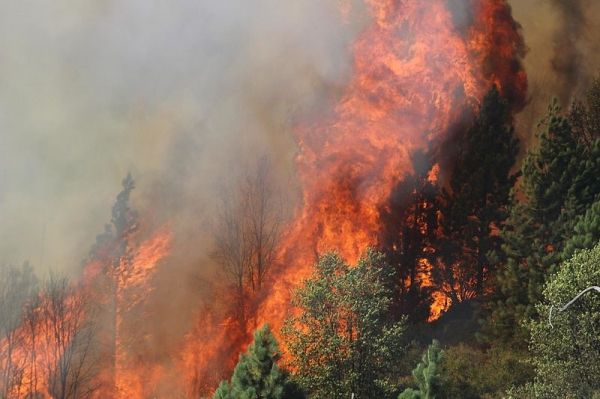A mile south of Yosemite National Park, fire ecologist Chad Hanson strides through the Stanislaus National Forest, heading to a great gray owl nest he found earlier this spring. Genetically distinct from its cousins in western North America, these rare birds are 2 feet tall, with a wingspan of about 5 feet. They can be seen almost any time because, unlike most owls, they are active day and night.
There are, however, only 200 to 300 adults remaining in California’s forests, which have been battered by drought, insects, rising temperatures, and fire. In the nearly five years that Hanson — principal ecologist with the John Muir Project, a non-profit group devoted to the ecological stewardship of federal forests — has been conducting research in the Sierra Nevada, he has yet to see an adult gray owl. They are almost as rare as the spotted owls that dwell in region.
As Hanson and I move into the site of the 2013 Rim Fire, which burned a record square 400 miles in the region, we spot a great gray owl in a snag — a bare, fire-scarred tree. Hanson is elated, not so much for the opportunity to finally see an adult of this species in the Stanislaus, but because it drives home a point he has been making about this fire: Despite the widespread devastation, the forest ecosystem is rebounding on its own, without help from federal foresters, who soon after the fire initiated a program of logging and replanting in other areas. On our hike, we pass acre after acre of young tree species and shrubs greening the once-charred landscape of this so-called snag forest.
Read more at Yale Environment 360
Photo Credit: U.S. Department of Agriculture via Wikimedia Commons


